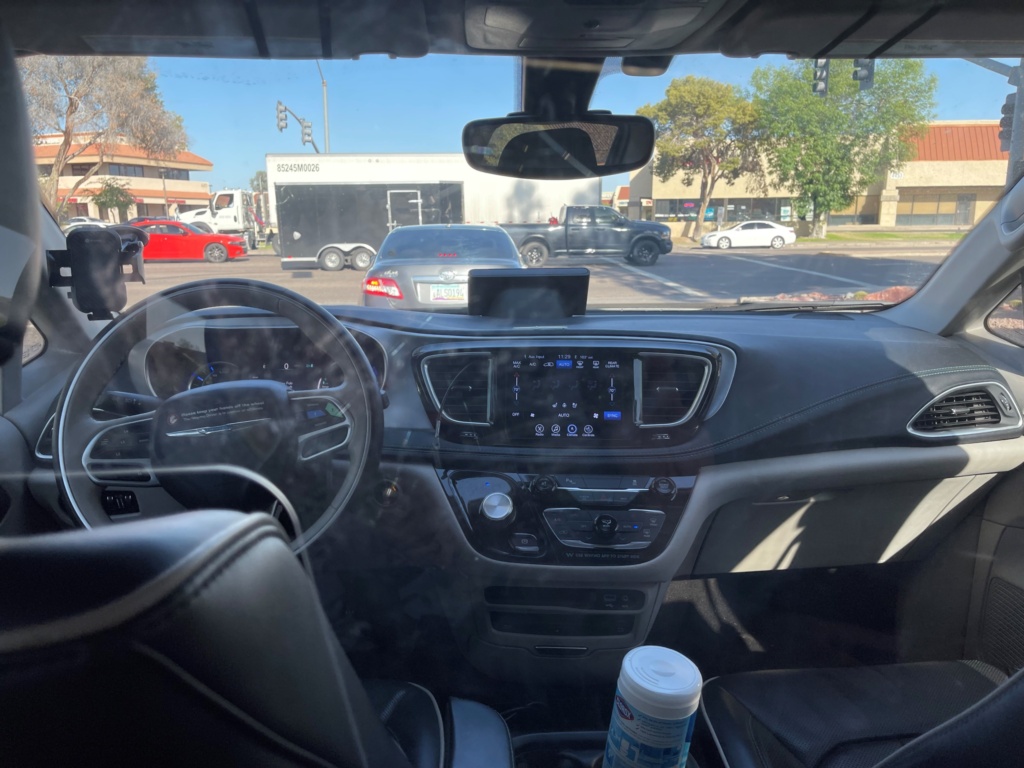AAA Survey finds Drivers remain Anxious about Autonomous Vehicles
PORTLAND, Ore., – A new survey from AAA shows that American drivers either express fear (66%) or uncertainty (25%) about fully self-driving vehicles – a fear that has not decreased since spiking last year.
However, interest in semi-autonomous technologies such as Automatic Emergency Braking (AEB), Reverse Automatic Emergency Braking, Lane Keeping Assistance and Adaptive Cruise Control remains high.
“Consumers continue to be wary of autonomous vehicles. Given the numerous and well-publicized incidents involving current vehicle technologies, it’s not surprising that people have concerns about the safety of these technologies,” says Marie Dodds, public affairs director for AAA Oregon/Idaho.
AAA has done the Autonomous Vehicle Survey every year since 2016.

Here are links to B-roll video. The videos were shot by Marie Dodds riding in a Waymo autonomous vehicle in Tempe, Arizona. These videos are also available for download. Please reach out to marie.dodds@aaaoregon.com.

Despite people’s fears of self-driving cars, interest in advanced driver assistance systems (ADAS) remains high. Six in ten drivers say they would “definitely” or “probably” want some type of advanced safety features in their next vehicle:
- Automatic Emergency Braking – 63%
- Reverse Automatic Emergency Braking – 62%
- Lane Keeping Assistance – 58%
- Adaptive Cruise Control – 55%
- Active Driving Assistance – 46%
When asked if there are cars available that drive themselves while you sleep, one in 10 drivers believe they can purchase such a vehicle, while three in ten drivers are unsure. Fully autonomous vehicles that can drive while occupants sleep are NOT available for purchase by consumers and are classified as Level 5 automation as defined by the Society of Automotive Engineers.
Drivers’ views of self-driving cars vary by age. Millennial drivers are more likely to say they would trust a vehicle to drive itself while they are in it (12%) than Baby Boomer drivers (6%) and millennial drivers are more likely to believe that there are cars available they could buy that drive themselves while they sleep (15%) versus Gen x (6%) and Baby Boomers (7%).
The majority of U.S. drivers also believe AEB will stop the vehicle when another car, children, adult pedestrians, or bicyclists are in front of or behind the vehicle. However, recent AAA research found that Reverse AEB systems prevented a collision in only 1 of 40 test runs in the context of the backing-up scenarios involving a subject vehicle crossing behind the test vehicle and only 10 out of 20 test runs with the stationary child target behind the test vehicle.
AAA says that for interest in ADAS to remain high, it’s crucial to ensure consistency in the performance and naming of these systems. Currently, automakers use names such as Autopilot, ProPilot and Pilot Assist for ADAS. These names suggest that the vehicles can drive themselves, which is false. AAA continues to urge automakers to clear the confusion by naming technologies in a way that more accurately reflects capabilities.
Some fully autonomous vehicles are operating in the U.S., including the Waymo One ride-hailing service that operates in the Phoenix, AZ area. The B-roll videos shared at the link above were shot in such a Waymo vehicle.
In Oregon, the Oregon Department of Transportation (ODOT) is monitoring technology developments, evaluating safety benefits and exploring ways connected and automated vehicles can increase mobility options for Oregonians. ODOT Is the agency that coordinates autonomous vehicle programs and policies in the state. https://www.oregon.gov/odot/programs/pages/cav.aspx
“AAA will continue working with automakers to establish consistency in the naming of the technologies and uniformity in performance across the industry. By collaborating, we can ensure that consumers understand the technologies in their vehicles and know what these advanced driver assistance systems can and can’t do,” says Dodds. “For now, these technologies can enhance driver awareness but do not replace an alert and attentive driver.”
Methodology
The survey was conducted January 11-16, 2024, using a probability-based panel designed to be representative of the U.S. household population overall. The panel provides sample coverage of approximately 97% of the U.S. household population. Most surveys were completed online; consumers without Internet access were surveyed over the phone.
A total of 1,220 interviews were completed among U.S. adults, 18 years of age or older, of which 1,010 qualified for the study. The margin of error for the study overall is 4.1% at the 95% confidence level. Smaller subgroups have larger error margins.
About AAA
Started in 1902 by automotive enthusiasts who wanted to chart a path for better roads in America and advocate for safe mobility, AAA has transformed into one of North America’s largest membership organizations. Today, AAA provides roadside assistance, travel, discounts, and financial and insurance services to enhance the life journey of over 64 million members across North America, including over 57 million in the United States. To learn more about all AAA offers or become a member, visit AAA.com.
AAA news releases, high resolution images, broadcast-quality video, fact sheets and podcasts are available on the AAA NewsRoom at NewsRoom.AAA.com.
Find local news releases at https://oregon.aaa.com/community/media/media-contacts.html
For more info go www.AAA.com. AAA Oregon/Idaho provides more than 890,000 members with travel, insurance, financial and automotive-related services, and is an affiliate of AAA National, serving more than 64 million motorists in North America.

